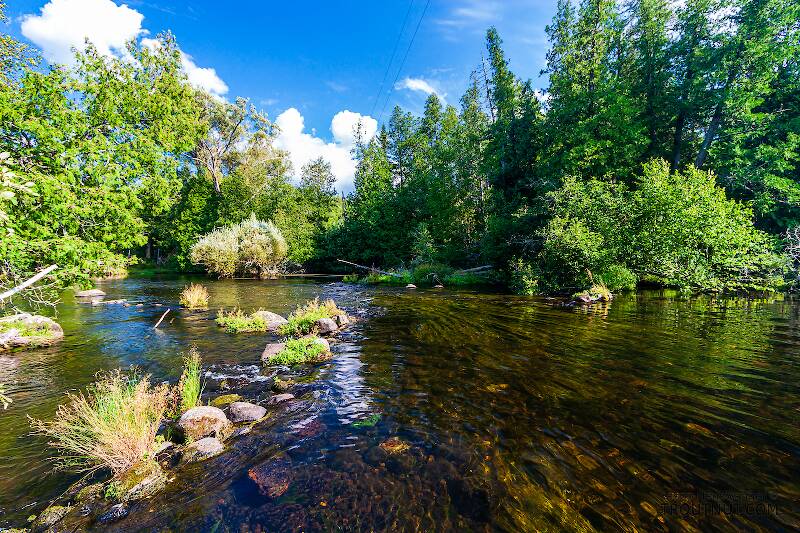
Hex Mayflies
Hexagenia limbata
The famous nocturnal Hex hatch of the Midwest (and a few other lucky locations) stirs to the surface mythically large brown trout that only touch streamers for the rest of the year.


Mayfly Species Rhithrogena gaspeensis
Species Range
Physical description
Most physical descriptions on Troutnut are direct or slightly edited quotes from the original scientific sources describing or updating the species, although there may be errors in copying them to this website. Such descriptions aren't always definitive, because species often turn out to be more variable than the original describers observed. In some cases, only a single specimen was described! However, they are useful starting points.
Male Spinner
Wing length: 11-12 mm
A species of the Rhithrogena brunnea (now a synonym of Rhithrogena hageni) group, having lateral spines on the penes.
Head deep brown, with blackish shading around bases of ocelli. Thorax deep pitch-brown; pleura paler brown, anterior to wing roots. Legs dull brown; a central longitudinal blackish streak on femora. Wings hyaline; veins fine, brown; extreme base of wing with a very faint brownish tinge. Abdominal segments dull brown; basal segments slightly paler hyaline...near intersegmental areas” (McD)., but with no definite markings. Tails deep smoky.
Allied to Rhithrogena doddsi (now a synonym of R. hageni) and Rhithrogena morrisoni, in type of male genitalia; differs from the former "in that the penis-lobes are much more narrowed apically and bend gently and evenly outward; there is further no trace of any other spining on either dorsal or ventral surfaces; in morrisoni the lobes are broader apically and more excurved and there is a very distinct, although small, spine on the inner ventral surface of each lobe” (McD). (See fig. 100, after McDunnough).
Start a Discussion of Rhithrogena gaspeensis
References
- Jacobus, L. M., Wiersema, N.A., and Webb, J.M. 2014. Identification of Far Northern and Western North American Mayfly Larvae (Insecta: Ephemeroptera), North of Mexico; Version 2. Joint Aquatic Science meeting, Portland, OR. Unpublished workshop manual. 1-176.
- Needham, James G., Jay R. Traver, and Yin-Chi Hsu. 1935. The Biology of Mayflies. Comstock Publishing Company, Inc.
Mayfly Species Rhithrogena gaspeensis
Species Range
Resources
- NatureServe
- Integrated Taxonomic Information System
- Global Biodiversity Information Facility
- Described by McDunnough (1933)

